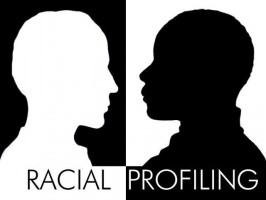Widgetized Section
Go to Admin » Appearance » Widgets » and move Gabfire Widget: Social into that MastheadOverlay zone
Public Administration Research: Help or Hindrance for Practitioners?
A note for our readers: the views reflected by the authors do not reflect the views of ASPA.
*This is part one of a two-part column.*
By Joseph Adler
My inaugural article for PA TIMES online mentioned instances where public administrators sometimes initiate and sustain programs that are not supported by or are in direct contradiction to published studies, using pay for performance as the policy in question. A subsequent column dealt with the issue of representative bureaucracy and its impact on providing effective public services- an instance where the goals of scholars and practitioners are aligned. This column will continue these two streams of thought, albeit in a slightly different perspective.
This column looks at two published articles concerning racial profiling by police officers and the potential for public administrators to draw erroneous conclusions from these studies. As always, the goal is to have a robust discussion of the issues between academics and practitioners.
Police Racial Profiling: What Does the Literature Show?
 There are a number of empirical studies concerning racial profiling at traffic stops. The results have been published in both criminal justice and public administration journals. Geoffrey Alpert and others, in a 2007 Criminology and Public Policy article titled “Investigating Racial Profiling by the Miami-Dade Police Department: A Multi-method Approach,” analyzed the published articles of racial profiling by a number of jurisdictions including New Jersey, Maryland, Sacramento, CA and Denver, CO.
There are a number of empirical studies concerning racial profiling at traffic stops. The results have been published in both criminal justice and public administration journals. Geoffrey Alpert and others, in a 2007 Criminology and Public Policy article titled “Investigating Racial Profiling by the Miami-Dade Police Department: A Multi-method Approach,” analyzed the published articles of racial profiling by a number of jurisdictions including New Jersey, Maryland, Sacramento, CA and Denver, CO.
In New Jersey, the state police made almost 90,000 stops over a four-year period. Black or Hispanic drivers represented only 34 percent of the traffic stops, but they were searched over 77.2 percent of the time.
The Maryland study involved a visual analysis of motorists on Interstate 95 driving more than five miles per hour over the speed limit. In that study, 17.5 percent were black and 74.7 percent were white, yet almost 73 percent of reported searches were black drivers.
The Sacramento analysis found an over-representation of black individuals in traffic stops. Black and Latino drivers were substantially more likely than white drivers to be the subjects of searches in Denver. Alpert and others studied the Miami-Dade traffic stops and found that stops based on equipment violations were associated with a 40 percent increase in the odds of the driver being a minority.
Bernard Harcourt in a 2004 University of Chicago Law Review article titled “Rethinking Racial Profiling: A Critique of the Economics, Civil Liberties, and Constitutional Literature, and of Criminal Profiling More Generally,” reported on the data collection efforts by over 400 law enforcement agencies. The findings consistently showed disproportionate searches of African-American and Hispanic motorists in relation to their estimated representation on the road.
James Ward, in a 2002 Public Administration Review article titled “Race, Ethnicity, and Law Enforcement Profiling: Implications for Public Policy,” cites a number of studies supporting the existence of racial profiling in traffic stops and adds that such disparities also exist in drug use related stereotyping and sentencing of juvenile and adult offenders.
The above examples are by no means exhaustive and a discerning reader is invited to explore the large body of research on the topic of traffic stop racial profiling. While the cause(s) for racial profiling elicit various responses from scholarly researchers, the literature leaves little doubt that some form of traffic stop racial profiling is a reality for a number of African-American and Latino drivers.
An intuitive public policy solution to the problem may focus on representative bureaucracy i.e. having a public workforce, in this case police officers, that mirrors the population being served. A pair of studies by two researchers, however, came to an opposite conclusion– that the presence of additional minority police officers can lead to an increase of racial profiling.
Next month we will explore the policy dilemmas and the takeaways for public administrators.
Author: Joseph Adler is a member of ASPA and is a NAPA Fellow. He is the Director of the Office of Human Resources for Montgomery County, Maryland. He has held a number of senior level public administration positions in state and local governments. The views and comments expressed in this article are solely the author’s and do not represent any policy positions of Montgomery County, Maryland. Mr. Adler can be reached at: [email protected].


Pingback: Public Administration Research: Help or Hindrance for Practitioners? (Part II) | PA TIMES Online